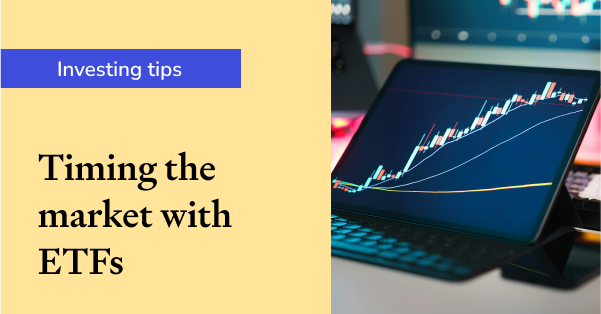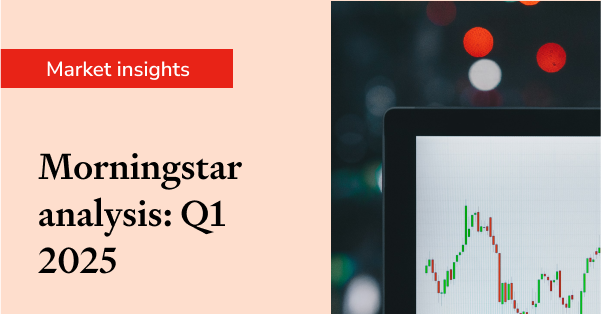Going global with ETFs: Strategies for international investing
Disclaimer: The content of this article is provided for informational purposes only. It does not constitute, and should not be interpreted as, a recommendation or endorsement of any particular product or service. Readers are encouraged to conduct their own research and exercise their own judgment when making purchasing decisions. Sharesight shall not be held responsible for any consequences resulting from reliance on the information provided within this article.
Home bias, the tendency of investors to favour domestic markets over those on international exchanges, affects investors in many countries.
Familiarity with the ASX, convenient trading hours, a lack of exchange rate risk - and for Australians, the allure of franking credits1— make investors comfortable staying at home.
But that’s all started to change in recent years as the proliferation of international shares ETFs have made overseas investments more accessible than ever.
Meanwhile, financial advisors, along with the funds management industry, have made concerted efforts to educate investors on the benefits of overseas investments.
The stunning performance of the Magnificent Seven group of stocks (see table below) has drawn significant attention to the technology and AI sectors, sparking interest in how investors can gain exposure to these areas.

Source: TipRanks.com; cumulative returns over the five years to August 28, 2024. Past performance is not indicative of future performance.
Data from the ASX shows that while in 2017, the split between assets held in Australian shares ETFs and international shares ETFs was close to even, international shares ETFs hold nearly twice the amount invested in ETFs than domestic exposures today (see chart below).

Source: ASX Investment Products monthly update, Betashares analysis. As at 31 July 2024. Based on July data of each year. Australian Shares ETFs includes ‘Equity – Australia’, ‘Equity – Australia Small/Mid Cap’, ‘Equity – Australia Sectors’, and ‘Equity – Australia Strategy’. International Shares ETFs includes ‘Equity – Global’, ‘Equity – Asia’, ‘Equity – EM’, ‘Equity – Global Sectors’, and ‘Equity – Global Strategy’.
But direct share investors still heavily favour Australian shares, with the ASX Investor Study 2023 showing 58% of investors held domestic stocks directly (down from 60% in 2020), while 16% of investors held international equities directly (up from 15% in 2020).2
International equities regain top spot
As investors began to anticipate and then digest interest rate rises in the US, international shares fell out of favour among Australian ETF investors in 2022. Fixed income began to offer more attractive rates, and floating rate bonds in particular attracted record flows, helping push international equities into the third spot for net flows in 2022.3
In 2023, these trends were extended, with fixed income rising to the top asset class for net flows over the course of the year.4
But international equities are topping the list for ETF flows again in 2024, averaging more than a billion dollars of net flows per month over the last four months.

Source: Betashares Australian ETF Review July 2024. As at 31 July 2024.
The Nasdaq is no longer just about US exposure
Gone are the days when investing in the Nasdaq-100 was simply a way to check off US exposure from the diversification checklist. The Nasdaq exchange contains many of the world’s largest companies, which tend to have global streams of revenue. On a ‘look-through’ basis, the Nasdaq-100 is a way to gain worldwide exposure.
The growing global reach of technology companies and the immense potential of innovations like AI, gaming and the cloud have not gone unnoticed by Sharesight customers. The data reveals that 30.6% of Sharesight’s Australian premium users have direct exposure to the Nasdaq through individual stock investments, while 58.4% of users hold exposure to the Nasdaq via ETFs including the Betashares Nasdaq 100 ETF (NDQ) and Betashares Nasdaq Next Gen 100 ETF (JNDQ). Overall, 64.4% of Australian premium users have exposure to the Nasdaq, either through direct ownership of a Nasdaq-listed stock or via an ETF which has some exposure to the Nasdaq.
In a world that’s increasingly interconnected, it’s more important than ever to ‘look under the hood’ to truly understand your exposures.
Ways to broaden international exposure
Now that you’ve gained a deeper understanding of international ETFs and evaluated your portfolio, you may have identified a gap in your geographic exposure. Perhaps you want to increase your investments in non-US equities, for instance.
Consider incorporating emerging markets
ETFs offer a simple way to adjust geographic exposures, with options like the Betashares India Quality ETF (ASX: IIND) enabling investors to tailor their country allocations to capitalise on the most attractive opportunities.
India, in particular, stands out due to its demographic and economic catch-up potential. With many countries facing an aging population, India’s median age is just 28 years — 10 years younger than in China or the US. Despite doubling over the past decade, India’s GDP per capita remains below US$3,000, ranking among the lowest globally.
“India now boasts the highest projected economic growth rate amongst major developed and developing nations. Having overtaken China since 2021, India grew at 8.2% for the fiscal year, versus the Chinese government growth target of 5.0%. India now sits as the world’s 5th largest economy with plenty of room left for growth,” says Betashares’ Senior Investment Strategist, Cameron Gleeson.
Enhance sector diversification
Another innovative way investors can utilise ETFs is by enhancing diversification within a sector they already hold.
For example, if you’ve been investing for a long time, there’s a reasonable chance you might have a decent portion of your portfolio in Australian banks — either directly or indirectly.
While you may be happy with your allocation to the banking sector, perhaps having a large exposure to the big four Australian banks doesn’t suit your strategy.
Betashares Global Banks ETF – Currency Hedged (ASX: BNKS) is an example of an ETF that holds global banks from outside Australia, providing a simple and cost-effective way to diversify financial sector exposure.
Bolster allocations to underrepresented sectors
On the other hand, you might find that your exposure to certain sectors is relatively low as they are underrepresented in popular and broad market ETFs.
For example, an investor with international equities held through ETFs like Betashares S&P 500 Equal Weight ETF (QUS) or NDQ, and domestic equities exposure via an ETF tracking the top 200 ASX-listed companies, might have limited exposure to global energy and healthcare companies.
In this scenario, Betashares Global Energy Companies ETF – Currency Hedged (ASX: FUEL) and Betashares Global Healthcare ETF – Currency Hedged (ASX: DRUG) could be used to enhance and balance sector allocation, providing exposure to prominent companies such as BP, Merck and Novartis in the process.
Understand and implement
Whether you’re adding ETFs to a portfolio of individual shares for the first time or you're an experienced ETF investor, Sharesight provides tools like its diversity and exposure reports to give you a clear breakdown of your portfolio’s diversification. Meanwhile, Betashares’ broad range of international ETFs can help you implement your strategy effectively.
About Betashares
Betashares is a leading Australian financial services company, serving over one million investors and their advisers across the broadest range of ETFs on the market. With a commitment to innovation and investor education, Betashares has become a trusted name in the ETF space and now offers direct investing in 350+ ASX traded ETFs through the Betashares Direct investing platform.
Track your ETFs with Sharesight
With Sharesight's portfolio tracker you can track the performance of your ETFs alongside the rest of your investments, including dividends, currency fluctuations, diversification, tax and more. Sign up for free to start tracking your performance today.
FURTHER READING
- Building a multi-asset portfolio with ETFs
- Generating income with ETFs
- How to track exchange-traded funds (ETFs) with Sharesight
1Not all Australian investors will be able to receive the full value of franking credits.
Investing involves risk. The value of an investment and income distributions can go down as well as up. An investment in a Betashares Fund should only be considered as a part of a broader portfolio, taking into account your particular circumstances, including your tolerance for risk. For more information on risks and other features of each Betashares Fund, please see the Product Disclosure Statement and Target Market Determination, both available at www.betashares.com.au

8 ways to use Sharesight's custom groups feature
This blog explains our custom groups feature, including strategies that can help you gain deeper portfolio insights and make more informed investing decisions.

You can time the market – and ETFs are the way to do it
Marcus Today founder and director Marcus Padley discusses timing the market, and how investors can do this using exchange-traded funds (ETFs).

Morningstar analyses Australian investors’ top trades: Q1 2025
Morningstar reviews the top 20 trades by Australian Sharesight users in Q1 2025, and reveals where their analysts see potential opportunities.